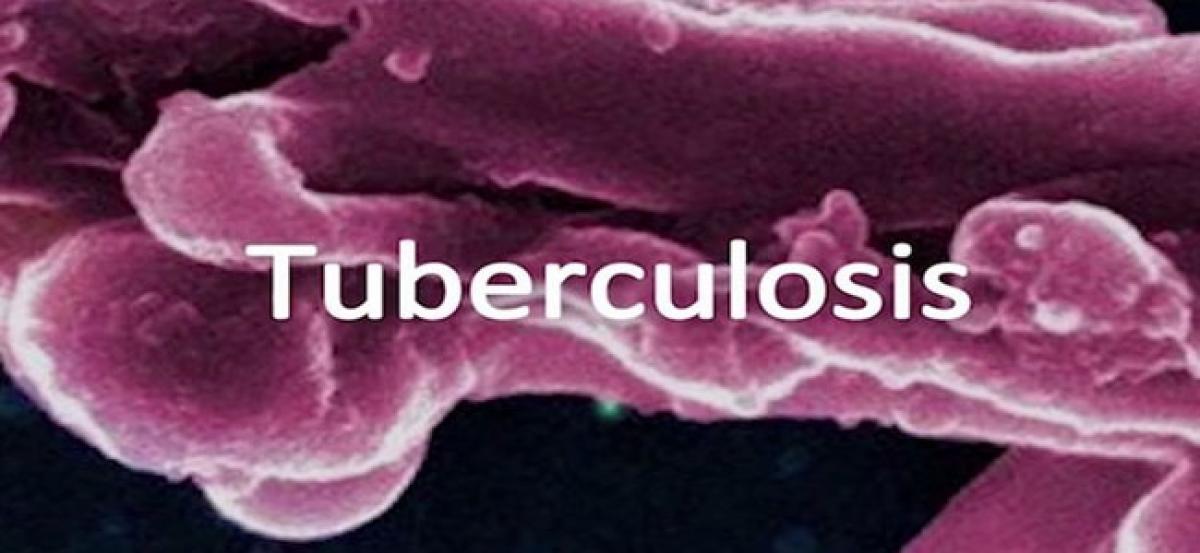Live
- Former Zimbabwe cricketer Guy Whittall injured by leopard
- Fatal Fire Erupts In Hotel Near Patna Junction, Claims Six Lives
- Congress Challenges PM Modi's Allegations: Calls Out "Falsehoods" Amidst Electoral Rhetoric
- CPI(M) leader seeks Calcutta HC’s attention over Bengal CM's anti-judiciary comments
- Aparna Yadav Challenges Akhilesh Yadav's Candidacy In Kannauj: No Longer A Smooth Ride For Samajwadi Party
- A constable who helped an old woman in a very dangerous place
- WBSSC Claims Eligibility For 19,000 Dismissed Staff Amidst Teacher Recruitment Scandal
- Tollywood’s shifting landscape: The growing influence of OTT platforms
- YSR Congress Party MLA candidate KK Raju campaigns in 23rd Ward Priyadarshini Colony
- Leaders and Residents Welcome TDP Candidates Pulivarthi Nani and Daggumalla Prasada Rao in Tirupati
Just In

According to World Health Organisation (WHO), tuberculosis (TB) is one of the top 10 causes of death globally and resulted in 1.8 million
New Delhi: According to World Health Organisation (WHO), tuberculosis (TB) is one of the top 10 causes of death globally and resulted in 1.8 million deaths in 2016, alone. 95% of TB deaths occur in low-and middle-income countries.
Tuberculosis is a serious form of infection that affects lungs and at times other parts of the body like bones, joints and kidneys. It is caused by bacteria Mycobacterium tuberculosis.
It spreads through air and a person can contract TB by breathing in TB bacteria. These bacteria get released in the air by a person who already has the bacteria in his/her body.
Bacteria that causes tuberculosis in human beings usually affects the lungs but can also affect other parts of the body. Infection by mycobacterium tuberculosis won't necessarily make you sick as you can have either latent TB or TB disease.
"TB happens when a person with latent TB becomes sick. Some individuals become sick as soon as they get infected, before their immune system can fight back. In other cases, people don't get sick initially but they fall sick when the immune system becomes weak. This can happen due to some other infections or immunocompromised conditions," said Dr Sireesh, Consultant Pediatrician & Pediatric Endocrinologist, TeleradRxDx.
Age groups that are commonly affected
-Infants and children aged less than 4 years
-People infected in the preceding two years
-People with immune-compromised conditions
-Those with other preexisting diseases or conditions such as diabetes and chronic renal failure.
Signs and Symptoms:
It is very difficult to diagnose TB based only on symptoms as TB mimics symptoms of some other diseases. In such scenarios, tests should be performed to confirm the diagnosis and reveal definite evidence of TB bacteria.
Common symptoms of pulmonary tuberculosis includes
-Bad cough that lasts more than one week
-Pain in chest
-Weakness
-Blood in sputum
-Fatigue
-Weight loss
-Lack of appetite
-Chills
-Fever
-Night sweat
Diagnosis of Tuberculosis:
Some of the tests for TB diagnosis focus directly on looking for the bacteria while other tests, such as chest X-rays, look for the effect of the bacteria on a patient's body.
Treatment:
Medications are the cornerstone for the treatment of TB; however, treating TB takes much longer than treatment for other bacterial infections. Apart from the regular anti tuberculosis drugs there are various new drugs that are being tested and studied as add-on therapy to the current combination treatment.
Common myths and facts about Tuberculosis:
1)Myth: Tuberculosis occurs only among lower socioeconomic group
Fact: Tuberculosis can be contracted by anyone. However, certain population such as people with reduced immunity, elderly and immigrants are at greater risk of developing tuberculosis. Family members and other individuals in contact with them are also at the risk of developing tuberculosis.
2)Myth: TB is a hereditary disease.
Fact: Genetics plays no role in transmission and acquisition of Tuberculosis. It is not hereditary however, members of the same family may get infected as it is transmitted through the air.
3)Myth: TB is caused by excessive smoking
Fact: Smokers are predisposed to develop respiratory diseases, however, tuberculosis is a bacterial infection caused by Mycobacterium tuberculosis.
4)Myth: TB is incurable and is fatal
Fact: TB is completely curable however; the treatment of TB takes much longer when compared to other bacterial infections. In most cases, because of lengthy treatment regimen and side effects of drugs, patients often discontinue the treatment. It is important that this does not happen and patients complete their treatment which will help them in complete recovery.

© 2024 Hyderabad Media House Limited/The Hans India. All rights reserved. Powered by hocalwire.com







